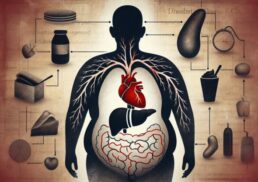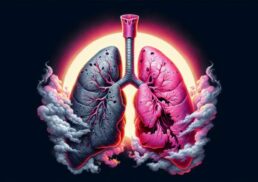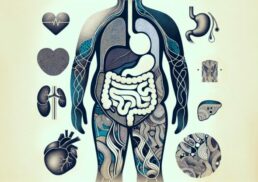Imagine the feeling of strength slipping away over time, making everyday activities harder than they used to be. This is the reality for many older adults as they struggle with a condition called sarcopenia. But what if there were ways to prevent or even reverse this decline in muscle mass and strength? The good news is that there are strategies to help maintain muscle health and improve quality of life. In this blog post, we will explore sarcopenia, its symptoms, causes, and management strategies that can make a difference.
Table of Contents
Key Takeaways
Sarcopenia is a condition characterized by age-related low muscle mass, leading to functional impairment and increased risk of mortality.
Early recognition of symptoms such as weakened physical strength can help individuals seek timely intervention for managing the condition.
Regular physical activity and balanced diet are key lifestyle interventions for preventing sarcopenia and improving overall health & well being.
Defining Sarcopenia
Sarcopenia is a condition characterized by age-related low muscle mass, which can lead to functional impairment and reduced quality of life. It primarily results from:
Decreases in hormones and neuromuscular junctions
Elevated inflammation
Reduced physical activity
Inadequate nutrition
This decline in low skeletal muscle mass and strength is strongly associated with frailty and risk of falls in older adults, making it a significant risk factor for disability and mortality due to the loss of skeletal muscle mass.
The prevalence of sarcopenia varies, with studies indicating that rates range from 5% to 13% in people aged 60 and older. The risk of developing sarcopenia is influenced by factors such as age, gender, and level of physical activity. The rate of muscle tissue loss in sarcopenia depends on exercise level, co-morbidities, nutrition, and other relevant factors.
For more info, please visit Sarcopenia – symptoms and causes.
Age-Related Muscle Loss
Age-related muscle loss, also known as muscle atrophy, is a major factor in the development of sarcopenia and is associated with a decline in muscle protein synthesis. Muscle loss typically begins in the 30s or 40s and progresses as we age. After middle age, adults experience an average 3% decrease in muscle strength annually, making it increasingly important to address this issue as we grow older.
Increases in age are associated with an increased risk of sarcopenia. Additionally, men and those with lower levels of physical activity may be more prone to developing sarcopenia. By understanding and addressing these risk factors, individuals can take steps to maintain their muscle mass and strength, ultimately improving their overall health and quality of life.
Primary vs. Secondary Sarcopenia
Sarcopenia can be considered ‘primary’ (or age-related) when no other cause can be identified aside from aging itself. In contrast, ‘secondary’ sarcopenia occurs when other causes, such as physical inactivity or chronic disease, are present. A condition called sarcopenic obesity is also noteworthy, in which there is a decrease in lean body mass while fat mass may remain the same or even increase.
The relationship between sarcopenia, muscle mass, and strength is significantly impacted by physical activity. Inactivity is associated with a decrease in muscle mass and strength, indicating that physical activity may be a protective factor for both the prevention and treatment of sarcopenia and other chronic wasting diseases.
Recognizing Symptoms of Sarcopenia
Early recognition of sarcopenia symptoms aids in seeking timely intervention and management strategies. Initial indications of sarcopenia include a sensation of physical debilitation over time and having more difficulty than normal lifting familiar objects. By paying attention to these early signs, individuals can take action to address muscle loss before it significantly impacts their quality of life.
As sarcopenia progresses, individuals may experience weight loss, increased difficulty with daily tasks, and a higher risk of falls. Identifying these symptoms aids in the management of sarcopenia and hinders severe adverse outcomes, such as physical disability and a decrease in the quality of life.
Early Indicators

The initial signs of sarcopenia include:
Muscle weakness
Reduced stamina and strength
Difficulty completing daily activities
Diminished muscle mass
Self-reported muscle wasting
General body weakness
Reduced stamina and strength
Decreased physical strength and increased fatigue over time may be indicative of the onset of sarcopenia. Being aware of these early indicators can help individuals seek timely intervention and potentially slow the progression of the condition.
Progression of Symptoms
As sarcopenia progresses, individuals may experience weight loss, increased difficulty with daily tasks, and an increased risk of falls. These signs can have a significant impact on an individual’s daily life, making it essential to address sarcopenia and implement appropriate management strategies.
Recognizing the progression of symptoms is vital for ensuring proper care and reducing the risk of adverse outcomes such as falls, fractures, and hospitalization.
Diagnosing Sarcopenia
Diagnosing sarcopenia involves a combination of clinical assessments, symptom questioning, and diagnostic tests. These tools help healthcare professionals evaluate muscle mass, muscle strength, and physical performance, enabling them to identify individuals at risk for sarcopenia and determine the severity of the condition.
Various techniques are available for assessing lean muscle mass and strength, such as the skeletal muscle index (SMI) method, which is calculated by dividing appendicular skeletal lean mass (ALM) by height squared. Additionally, handgrip strength measurements can be employed to assess muscle strength, with the Jamar dynamometer being the most commonly used technique.
Clinical Assessments
Physical examinations and the SARC-F questionnaire can help identify individuals at risk for sarcopenia. The SARC-F questionnaire consists of 5 questions concerning:
Strength
Walking with assistance
Rising from a chair
Climbing stairs
Falls
By evaluating these aspects of an individual’s physical capabilities, healthcare professionals can gain valuable insights into the potential presence of sarcopenia and provide appropriate interventions.
Early detection and intervention play a significant role in managing sarcopenia and mitigating its associated risks. Healthcare professionals.
Diagnostic Tests
Multiple tests, such as DXA scans and grip strength measurements, may be used to determine the severity of sarcopenia. DXA scans provide information on body composition, including skeletal muscle mass, while grip strength measurements assess muscle strength using a Jamar dynamometer or an equivalent hydraulic dynamometer.
Through these diagnostic tests, healthcare professionals can accurately assess an individual’s muscle mass and strength, enabling them to provide targeted interventions and support.
Managing Sarcopenia: Lifestyle Interventions
Managing sarcopenia effectively involves a combination of exercise and nutrition. Regular physical activity, particularly progressive resistance training, has been shown to be beneficial in preventing and improving sarcopenia. This type of exercise focuses on increasing muscle strength through gradually intensified workouts. Additionally, maintaining a balanced diet with adequate protein intake supports muscle health. It’s important to consider individual capabilities when designing an exercise program, and in some cases, consulting a physical therapist for a tailored program can be helpful.
Exercise and Physical Activity
Resistance training, including progressive resistance training, aerobic exercise, and balance training, can all help prevent and reverse muscle loss associated with sarcopenia. Engaging in regular physical activity, such as resistance exercise and aerobic exercise, can help maintain muscle mass and strength, ultimately improving overall health and quality of life, and preventing one from experiencing loss of muscle mass.
Incorporating these types of exercises into daily routines can help individuals effectively manage sarcopenia and minimize its impact on their lives.
Nutritional Support
Consuming adequate protein, vitamin D, and omega-3 fatty acids can promote muscle growth and overall health. Ensuring proper nutrition is vital in managing sarcopenia, as it helps support muscle health and growth, ultimately reducing the impact of muscle loss on daily activities and quality of life.
Maintaining a balanced diet and incorporating suitable supplementation can help individuals effectively manage sarcopenia and enhance their overall well-being.
Pharmacological Approaches and Future Research
Although there are currently no FDA-approved pharmacological treatments specifically for sarcopenia, hormonal supplements and emerging therapies are being studied for their potential in treating the condition. These new treatments may offer additional options for individuals struggling with sarcopenia, potentially improving muscle mass and strength.
Research into hormonal supplements, such as testosterone and growth hormone, has shown promise in improving muscle mass and strength. Emerging therapies, including myostatin inhibitors and selective androgen receptor modulators, are also being investigated for their potential in managing sarcopenia.
As research in this area continues, new and innovative treatments may become available, offering new hope for those affected by sarcopenia.
Hormonal Supplements
Hormonal supplements, such as testosterone and growth hormone, are being investigated for their potential to improve muscle mass and strength. Although not yet FDA-approved for managing sarcopenia, these hormonal supplements may offer additional options for individuals seeking to maintain or improve their muscle health.
As research in this area progresses, the potential benefits and risks associated with hormonal supplements will become clearer, providing valuable insights for healthcare professionals and patients alike.
Emerging Therapies
New treatments, including myostatin inhibitors and selective androgen receptor modulators, are being researched for their potential in managing sarcopenia. These emerging therapies target specific pathways involved in muscle wasting and offer the potential for innovative treatments that may improve muscle mass and strength in individuals with sarcopenia.
As research into these therapies continues, we may see the development of new and effective treatments that can improve the lives of those affected by sarcopenia.
Prevention Strategies
Staying active and maintaining a balanced diet can help prevent the onset of sarcopenia. Regular physical activity coupled with a nutrient-rich diet can help individuals maintain muscle mass and strength, thereby reducing the chances of developing sarcopenia. These prevention strategies not only help to stave off sarcopenia, but also contribute to overall health and well-being.
In addition to staying active and eating a balanced diet, it’s essential to address any underlying conditions that may contribute to sarcopenia. This comprehensive approach to prevention ensures that individuals are taking the necessary steps to maintain their muscle health and quality of life.
Staying Active
Engaging in regular physical activity can help maintain muscle mass and strength, ultimately preventing the onset of sarcopenia. Some effective exercises to incorporate into your routine include:
Resistance training, such as weightlifting or using resistance bands
Aerobic exercise, such as walking, jogging, or cycling
Balance exercises, such as yoga or tai chi
By incorporating a variety of exercises into your daily routine, you can effectively manage your muscle health and mitigate the risk of developing sarcopenia.
Staying active throughout life is crucial for maintaining overall health and well-being, making it an essential component of sarcopenia prevention.
Balanced Diet and Supplementation
Consuming a diet rich in protein, vitamins, and minerals, along with appropriate supplementation, can support muscle health and prevent sarcopenia. Ensuring adequate protein intake, including leucine-enriched amino acids and possibly creatine, is necessary for preventing sarcopenia. Rectifying low vitamin D levels is also essential.
Furthermore, following the Mediterranean diet and consuming higher amounts of fruits and vegetables have been linked to improved physical performance. Maintaining a balanced diet and including suitable supplementation can help individuals effectively prevent sarcopenia and preserve their overall muscle health.
Summary
Sarcopenia is a condition characterized by age-related muscle loss, leading to functional impairment and reduced quality of life. Through early recognition, proper diagnosis, and targeted interventions such as regular physical activity, balanced diet, and potential pharmacological approaches, individuals can effectively manage sarcopenia and improve their overall health and well-being.
The journey to maintaining muscle health and preventing sarcopenia begins with understanding the condition and implementing effective strategies to address it. By staying active, consuming a balanced diet, and seeking appropriate interventions, individuals can take control of their muscle health and live a life full of strength and vitality.
Frequently Asked Questions
What is the cure for sarcopenia?
Behavioral changes such as progressive resistance-based strength training and healthy dietary intake of proteins are the primary treatments for sarcopenia.
Exercise and diet should be done together in order to achieve maximum benefits.
What are the signs of sarcopenia?
Sarcopenia is characterized by a gradual decrease in muscle mass and strength, reduced physical performance, fatigue, loss of appetite and difficulty performing everyday activities.
What is life expectancy with sarcopenia?
Life expectancy with sarcopenia is similar to that of non-sarcopenic older adults, though individuals with sarcopenia are expected to experience three times more years of disability.
How is sarcopenia diagnosed?
Sarcopenia is diagnosed through clinical assessments, symptom questioning, and diagnostic tests such as DXA scans and grip strength measurements.
What lifestyle interventions can help manage sarcopenia?
Regular physical activity, including resistance training and aerobic exercise, as well as proper nutrition, are essential lifestyle interventions to help manage sarcopenia.
These interventions can help to improve muscle strength, reduce the risk of falls, and improve overall physical functioning. Additionally, they can help to reduce the risk of chronic diseases, such as diabetes, heart disease, and obesity.









